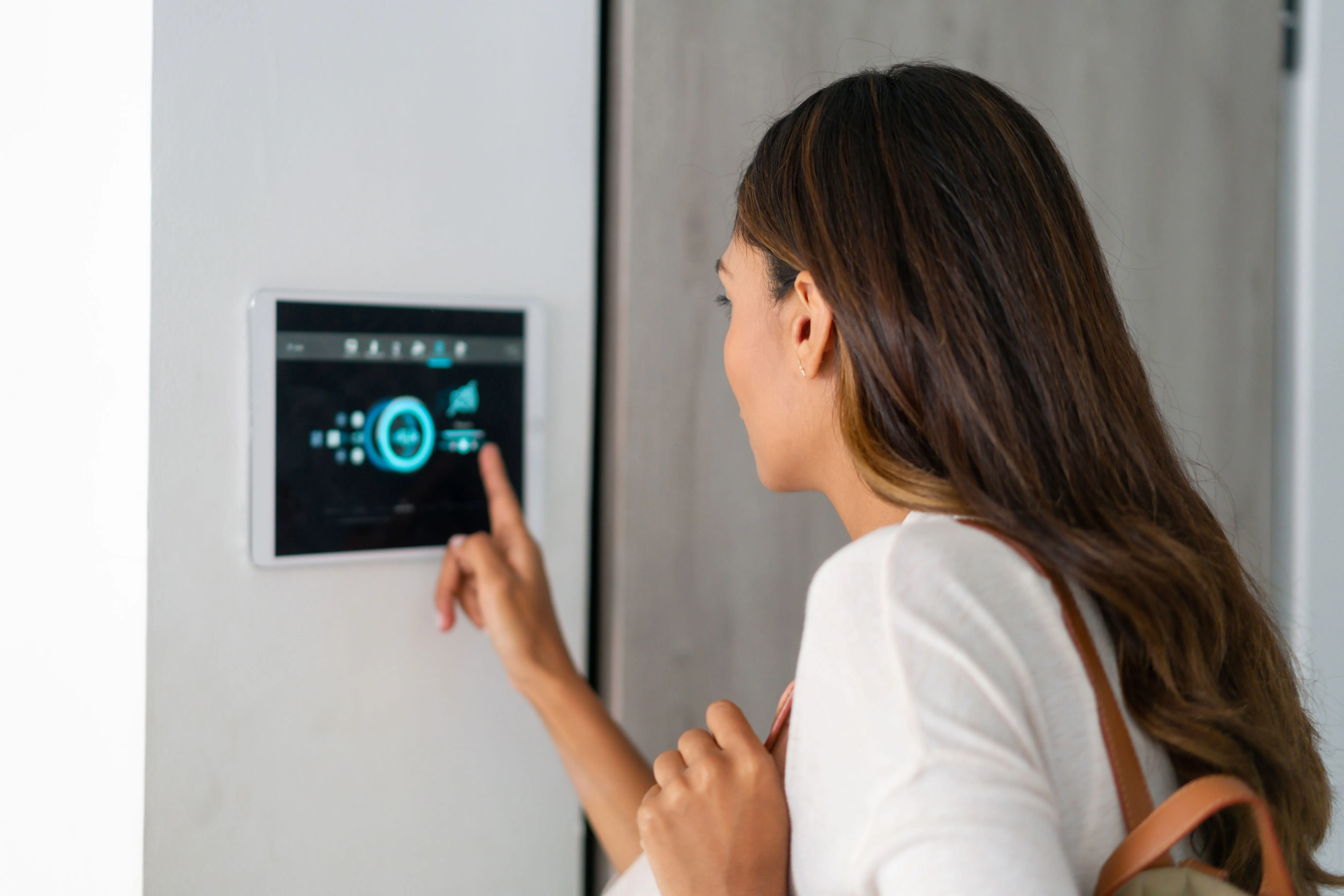 [ad_1]
[ad_1]
Burglar alarm systems are an essential part of a home security system, to the point where the terms are sometimes used interchangeably. Furthermore, homeowners who own intruder alarm systems usually pay lower home insurance premiums. Read on to learn what burglar alarms exactly are, how they work and the types of alarms available.
For more information on how to keep your home safe, read our list for the best home security systems.
What is a burglar alarm system?
A burglar alarm, also known as a security alarm, is a simple electric circuit that is designed to trigger an alarm in the event of a break-in or an unauthorized entry. In a home security system, alarms are placed in common entry points to the house such as windows and doors that lead outside.
Burglar alarm systems are usually controlled through a central control panel with a keypad that can be used to disarm it in the event of a false alarm. With professional monitoring, alarm signals are sent to a monitoring center, which can then ascertain if the break-in is legitimate and contact the authorities if necessary.
How burglar alarms work
Burglar alarms have a circuit that is activated by a switch, which is triggered whenever a door or window is opened. The most common type of burglar alarms are closed-circuit alarms, which work by having continuous electricity run through them; whenever the switch is flipped, this flow of electricity is interrupted.
The flipped switch then triggers the alarm to go off, usually by activating a control box that interprets the signal. This control box has a separate power supply, which adds a layer of protection as an intruder cannot simply disable a part of the alarm to prevent it from going off.
History of burglar alarms
A rudimentary type of burglar alarm was first suggested in Britain in the 1700s, in which chimes would alert you when a door was opened. The first electromagnetic alarm that was widely commercialized was patented by Augustus Russell Pope in 1853 and subsequently manufactured by Edwin Holmes, who is credited with popularizing them.
In 1877, Holmes established the first network of alarms monitored by a central station. The Holmes Burglar business was bought by the American Telephone and Telegraph Company (AT&T) in 1905, which linked it for the first time to law enforcement and the fire department, who would be alerted in case of an emergency. This essentially turned Holmes’ design into the first modern fire alarm.
Types of burglar alarm components
Sensors
Burglar alarms get triggered in different ways. Motion sensors —such as those that use infrared light— are sometimes placed in the insides of homes. Other sensors work by detecting loud noises.
Most common types of alarm sensors
- Motion detectors
- Window sensors
- Glass break sensors
- Passive infrared (PIR) sensors
Alert method
Not all sensors produce a loud alarm sound. Some alarms are silent and automatically alert authorities through a dialer, while others involve flashing lights — which benefit people with hearing disabilities. The alert method that works best for you is going to depend on the type of home you live in and your particular security needs.
Wired or wireless
Some burglar alarms run on battery packs and connect to the internet to its control box through Wi-Fi. This allows them to be part of a completely wireless system which has added security benefits. However, wireless alarms require regular battery checks, which is why some homes prefer using partially wired connections.

